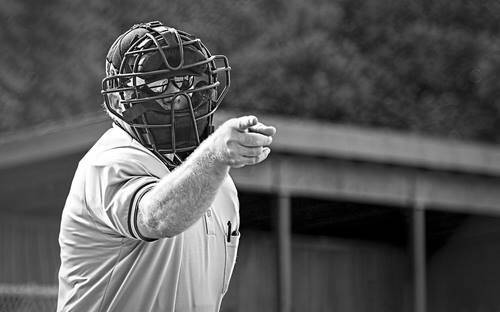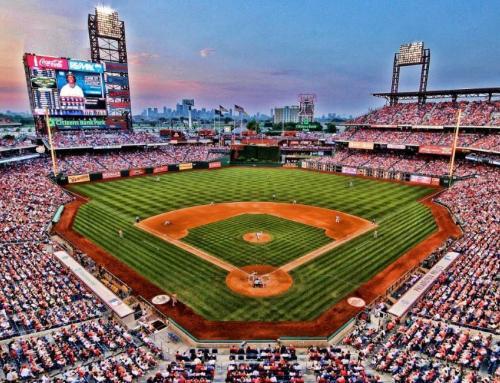Black Friday Sale!
 It’s back … the Imagine Sports Black Friday sale!
It’s back … the Imagine Sports Black Friday sale!
We will be giving owners $5 credit back ($2 for accelerated leagues) for every team entered in a newly-created league that drafts by 11:59 p.m. PT on Cyber Monday (December 2).
If it’s a custom league team, the league must have been created after new Classic salaries were uploaded on Sunday night, November 24. If it’s a standard league team, the team draft must have been submitted after that time.
You do not need to make a purchase to avail yourself of this offer. You do not need to contact us to claim your credit. At the end of the sale period, we will compile a list of all qualifying leagues that drafted during the sale period and credit the owners of teams in those leagues.
So, on your marks … get set … start creating new leagues and teams!
 New Classic Salaries
New Classic Salaries
New Classic player salaries are here in time for an indulgent Thanksgiving weekend creating new Classic teams and leagues.
There were 80 leagues from which player usage was drawn to calculate salary changes. Here are a few interesting highlights:
- Oscar Charleston was used in more leagues than any other player – star or scrub – 78 of 80 leagues, and his salary increased more than any other player in dollar terms: $3,763,000, from $18,660,000 to $22,423,000.
- In fact, the top three increases in salary were all centerfielders. In addition to Charleston, Tris Speaker increased $3,553,000, from $20,442,000 to $23,995,000, and Joe DiMaggio increased $3,509,000, from $20,560,000 to $24,069,000.
- Rafael Palmiero was the highest-salaried player not to be used in a single league and his salary dropped the most in dollar terms: $3,676,000, from $17,369,000 to $13,693,000.
- Other players who weren’t used in a single league and dropped more than $3 million in salary were: Ron Santo, from $16,224,000 to $12,779,000; Andruw Jones, from $15,583,000 to $12,268,000; Mordecai (Three-Finger) Brown, from $15,062,000 to $11,852,000; Cal Ripken, from $15,003,000 to $11,805,000; Bullet Joe Rogan, from $14,349,000 to $11,283,000; and Tim Raines, from $14,185,000 to $11,152,000.
- The player who received the largest salary increase in percentage terms was SP Roger Pavlik: 54.53%, from $1,882,000 to $4,139,000.
- The player (salary over $2 million) who received the larger salary cut in percentage terms was SP Roger Erickson: 40.27%, from $2,003,000 to $1,428,000.
N.B. After going to press, there was some last-minute tinkering, so the $ figures above will be slightly different from the final salaries implemented.
SSG Version 3 Is Here!
 It was perhaps the biggest project we’ve undertaken since the introduction of the Single-Season Game, but SSG v3 is finally here! Some of the changes and improvements we’ve made you will see; some are “under the hood”
It was perhaps the biggest project we’ve undertaken since the introduction of the Single-Season Game, but SSG v3 is finally here! Some of the changes and improvements we’ve made you will see; some are “under the hood”
The “fielding ratings project”. There are literally thousands of changes, additions and deletions of fielding ratings throughout the SSG player pool. This project did not involve qualitative re-rating of players (changes to range ratings), but rather changes to quantitative (error and passed ball) ratings, and corrections to positions being rated (for example, outfielders who were rated for the “wrong” outfield position because breakdowns of outfield positions played were not available at the time the particular season was created). Also part of this project was making the rating of secondary positions consistent throughout the player pool, including whether a player is given a rating for a secondary position they played very minimally, and replacing 0 error ratings given to such players with ratings more consistent with their performance at other positions and/or in other seasons at the same position.
Replacing the “original” 1961 season with the “deluxe” re-rated season. The PC game team are gradually working their way back through seasons originally created decades ago and re-rating them from scratch. These are sold to PC game customers as so-called “deluxe” seasons. When deluxe seasons are released, they also replace the online season, and 1961 has now been replaced by the “deluxe” version.
Introducing the 1922 season. The 1922 season is now available. The 1921 and 1920 seasons will be added when we move on to SSG v4.
Extending real splits. in SSG v2, we took real splits back to 1944; for SSG v3, we’ve taken them further back, to 1934.
Regenerating counting stats ratings for seasons with updated park factors. For SSG v2, the park factors for around 40 seasons were updated based on data that became available in the years after they first were created. We’ve continued to refine those seasons behind the scenes, and have regenerated player counting stats ratings for those seasons based on this refined data.
Applying a new and better methodology for estimating doubles and triples allowed by pitchers for seasons 1922-33. Play-by-play records are not yet available for doubles and triples allowed by pitchers for seasons prior to 1934, but using available data we have re-estimated and recalculated counting stats ratings for doubles and triples allowed for these seasons.
Recalculating salaries for the SSG player pool incorporating all of the above. All of the changes above impact on the salary calculation algorithms we use. In addition, we have refined those algorithms further. We also have applied a “usage premium” to the most heavily-used players since the introduction of SSG v2, and a “usage discount” to players with salaries over the $500,000 minimum who have yet to see the field.
 Sign-Ups Are Underway for the SSG Ladder Leagues
Sign-Ups Are Underway for the SSG Ladder Leagues
There is a new Single-Season Game addition to the Ladder Leagues. Here is how they will work:
There will be a cycle of seven ladder leagues seasons, with the player pools set as follows:
1922-1941 Golden Age era of play
1942-1961 Baby Boomers era of play
1962-1972 (plus Dead Ball Era team) Pitcher Era era of play
1973-1992 Turf Time era of play
1993-2004 HR Derby era of play
2005-2012 Moneyball era of play
2013-2[xxx] Most recent season era of play
Leagues will alternate without and with the DH. The inaugural SSG ladder leagues will comprise the 1922-1941 seasons player pool, set in the Golden Age era of play, without the DH.
The 1920 and 1921 seasons are due to be added as part of “SSG v4”. When this occurs, they will be added to this pool for the next cycle.
The last pool will go up to and include whatever the most recently added season is. Whether the most recent AL or NL “era” of play is used will depend on whether in that cycle the leagues are played with or without the DH.
The salary cap will be $120 million. Weekly income will be ($ millions) 2-3-4-8-4-3-2. Interest on cash balances will be 10%. Interest on loans 20%. Multiple versions of players not allowed, but you may change the version of a player. PTL and PTL on splits: on. There will be a 100 PA minimum for batters and a 20 IP minimum for pitchers. Drafts will be auto.
Registration for the inaugural SSG Ladder Leagues season is underway. Why not sign up right now?
 Tournament News
Tournament News
Phase 2 of the final round of the 2019 Masters Tournament is underway. From the initial field of 72, 24 owners are battling it out in the second of two finals leagues.
The first phase of the Finals was played with the Classic player pool. The second phase will be played with the SSG pool, with each owner limited to the exact same players they finished with in phase one. They may use any SSG season for each of those players, and change seasons as the league progresses, but must maintain the same 28 players on their roster throughout.
George Kreiner began Phase 2 of the Finals with a substantial 22.5 point lead over his nearest challenger, Greg David, and so far it looks like those two could lap the rest of the field as they battle for supremacy. Three weeks into the season, Kreiner’s Aurora Tsars team boasts a 35-19 record, best in the American Association, while David’s Master of None squad is doing even better with a 37-17 record, best in the National Association.
The Grand Open Tournament XIII is heading into the final week of the regular season, with 108 owners over 9 leagues battling to advance to the next round. The top teams after 8 weeks (Owner/Team/League/Record):
- Jay Knight/Santa Clara Swamis/Ginger Clark league/90-54
- David Shiner/Lakeview Gunslingers/Aubrey Epps league/89-55
- George Kreiner/Aurora China Dolls/Hal Schwenk league/88-56
A Game 7 No Hitter!
Bobo Newsom was no stranger to World Series success. Pitching for the Tigers, he defeated the Reds 7-2 in Game One of the 1940 World Series. Sadly, his father suffered a heart attack while watching his son pitch, reputedly for just the second time, and died the next day. Nevertheless, Newsom took the mound again for the Tigers in Game Five and shut out the Reds, 8-0, on just three hits. On just one day’s rest he returned to the mound to start Game 7, but Newsom and the Tigers lost to Paul Derringer and the Reds, 2-1.
Newsom achieved some redemption for that Game 7 defeat in the Buzz Boyle League World Series. Jim Slezak’s Evansville Southpaws won the Buzz Boyle League World Series in dramatic fashion, with Newsom throwing a Game 7 no hitter. He threw 157 pitches, overcoming eight walks, to win 1-0, the lone run scoring on Richie Zisk’s solo blast in the 7th inning.



Leave A Comment